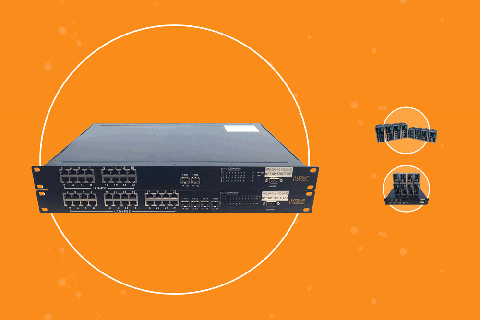How to Choose the Right Switch Every Time
Selecting an industrial-grade transmission device for security applications can seem confusing with so many options to choose from. For those times when you just need a quick reference guide, here is a checklist that will help you quickly identify what kind of switch you need.
If you need more support, we're always here to answer your questions and help you make the best decision.
Switch Selection Checklist
⃞ Do I need PoE?
Most IP-based security devices are PoE-powered, so the answer to this question will most likely be yes. To give you more flexibility, most of our switches have PoE and non-PoE capability, or there are non-PoE models available of our PoE switches. The switches with the N in the model number are non-PoE. Incidentally, a switch that is listed as having four ports is actually a five-port switch: four ports are PoE and one is non PoE and typically used as an uplink port. Similarly, a 24-port switch has 24 usable standard ports and either four additional SFP ports or four additional SFP combo ports, making it a 28-port switch.
⃞ How many Ethernet ports do I need?
Even if your video surveillance system has four cameras, you might need more than four ports. If you’re integrating a NVR and a wireless unit, for example, you will need six ports. Also think about your customer’s plan for expansion in the future – will they be adding additional cameras down the line? Perhaps a switch with more ports than they need right now will let them build out their system more easily in the future.
⃞ Do I need fiber linked or standalone?
If the switch will be linked to a larger network using fiber, you will need a Small Form-Factor Pluggable (SFP) port, so look for a switch with SFP capabilities. Learn more about our fiber solutions here. If the switch is standalone, e.g. going to a central point over a 4G or wireless connection, you probably don’t need any SFP ports. For a full fiber solution, we also offer full SFP switches.
⃞ Do I need a managed or unmanaged switch?
This depends on the scale of the network and where it’s going. For example, a small parking garage may only require simple unmanaged switches. Conversely, a large office complex may need to use multiple Virtual Local Area Networks (VLANs) to segregate the security network from other networks – managed switches would be better suited for this task.
⃞ How much power do I need?
Most applications will require a 48-volt DC power supply to power the switch and provide PoE. For applications that need a low power input instead, we have four-, six-, and eight-port switches available that can be powered from 9-36 volts DC and still provide you with up to 180 Watts of PoE power.
Switch Comparison Tool
Now that you understand the basics, it’s time to see the full scope of the switches we offer! Get an overview of our entire switch family, compare them to each other, and download spec sheets using our switch comparison tool, linked here.
When you subscribe to the blog, we will send you an e-mail when there are new updates on the site so you wouldn't miss them.


